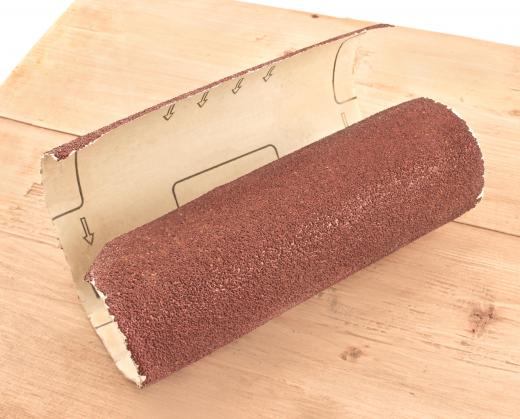Scary sharp is a technique used to sharpen metal using only sand paper. It may be used to create a sharp or beveled edge on hand tools, knives, and other metal objects. The scary sharp method gets its name from the fact that it can create an edge that's incredibly sharp. Tools or knives with sharp edges not only make it easier to cut wood and other objects, but also improve the quality and consistency of these cuts while helping to reduce the risk of errors.
While some craftsmen send metal tools or knives away for sharpening, many prefer to sharpen these objects at home to save time and money. Traditional woodworkers may rely on waterstone or oilstone sharpening techniques, while others may utilize a grinding wheel or other mechanical sharpening process. The scary sharp technique serves as an affordable and simple alternative to these sharpening methods, making it accessible to a wide range of woodworkers and hobbyists.

To use the scary sharp technique, workers start by attaching a piece of course sandpaper to a base material. Sheets of glass are the most popular base material due to the high level of abrasiveness they create, but others may use blocks or wood instead. Users may simply wet the back of the sandpaper to temporarily adhere it to the base, or use a spray adhesive for a more secure bond. This sandpaper should then be clamped to a table or workbench so it remains fixed throughout the sharpening process. Users can hold metal objects by hand as they sharpen, or insert the object into a sharpening jig for more precise and accurate beveling.
Scary sharpening requires only a few passes of the metal against the sandpaper. After each series of passes, the tool should be wiped clean to remove all dust and debris. After sharpening with course paper, the user repeats the process using a finer grit of sandpaper. This process can be repeated using finer and finer papers until the tool reaches the desired level of sharpening. Course papers remove nicks and gouges, while finer papers polish the material to a shine and create a razor-sharp edge.
One of the primary advantages to this sharpening technique is the speed and ease with which it can be performed. The scary sharp method requires little preparation and setup, and creates less mess than water or oil stone techniques. This method is also affordable, and requires only basic tools and supplies. Craftsmen should be careful not to overdo sharpening, as the scary sharp process requires only a few passes to create a sharp edge. Too much sharpening can shorten the life of materials or leave the edge too fine and brittle.
